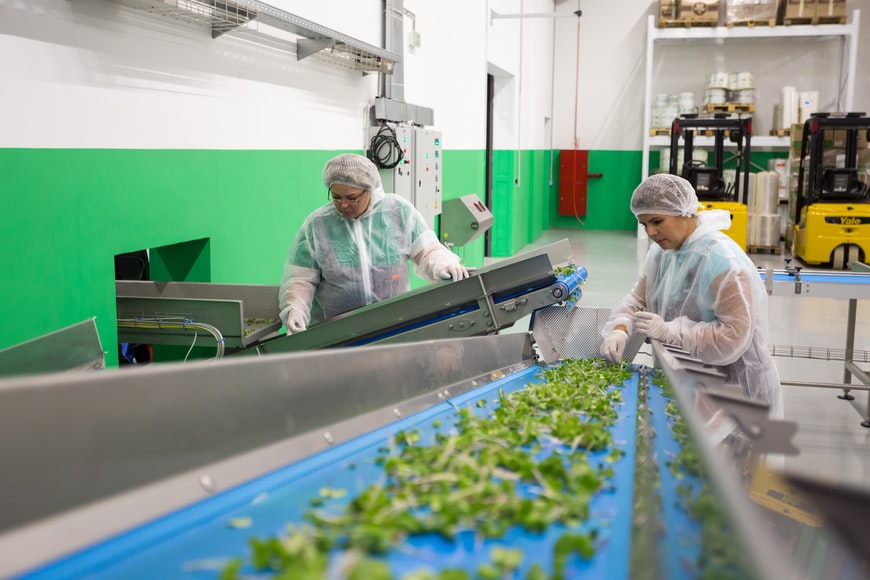
The pandemic brought operations and safety shortcomings to the forefront in many industries, but few were as significantly highlighted as food processing.
With numerous clusters of COVID-19 infections reported among food processing workers, the food processing industry has come under scrutiny on social factors such as employees’ health and safety. Cluster outbreaks caused a series of temporary closures of processing plants. This not only affected them financially and drew attention to the credibility of specific companies’ workplace practices, but also raised questions about food processing practices throughout the entire supply chain, from regulators to consumers.
Pre-pandemic food processing regulatory oversight focused mainly on the prevention of food-borne illness and contamination. This has now shifted, with authorities also reviewing the health and working conditions of the industry’s workforce.
There is no denying that the emphasis on health and safety in the food processing industry has intensified. Stakeholders along the supply chain are demanding change. The sustainability and future success of food and beverage plants largely depend on how they implement and manage these changes while remaining competitive. Those who embrace changes like digital enrollment, accelerating food production and processing transparency, improving resilience and automation while driving efficiency will experience the greatest success.
Customer priority shifts
Since customers are the key influencers driving the supply chain, their concerns and opinions dictate product demand and industry success. And these customers are more concerned about worker welfare than ever before. Between 20 and 40% of customers in developed and emerging markets cite hygienic packaging and employee welfare as priority decision-making considerations, for example.
However, these priority shifts in health and safety don’t just apply to supply chain processes. The pandemic has also led to consumers becoming more aware of their own health. A January 2021 survey found that 63% of consumers are making an increased effort to improve their diet in response to the pandemic. Consumers are making the link between their health, diet, and staying fit more than ever before, with two in three consumers now viewing a healthy diet as an important factor in controlling their health.
Increased food processing transmission risks
According to a 2020 ECDC report, food processing operations have consistently reported the second-highest number of COVID-19 infection clusters. This comes second only to health and social work settings, which are obviously directly entangled on the front lines of preventing spread. Additionally, a UK analysis of deaths from COVID-19 revealed that male employees working as industrial machinery cleaners and packers had almost double the mortality rate from COVID-19 compared to the general population.
Risk factors regarding COVID-19 safety in food distribution and processing are attributed to a lack of social distancing when working in confined spaces and the sharing of production lines, canteens, dressing rooms, and transport. Migrant and seasonal workers often share below-standard overcrowded accommodation.
With these factors in mind, it is no surprise that stakeholders are demanding change.
How are businesses coping with these shifts?
Implementing the food processing safety guidelines recommended by leading world medical organizations requires companies to make operational adjustments that can affect their bottom line. For example, reducing the number of workers in a given production area can result in reduced productivity. The alternative option – increasing work space – raises premises costs, which is also a burden. And cutting costs in areas such as wages to compensate will just contribute further to the current labor shortage.
In addition, regulation adherence, shift restructuring, and safety protocol rollouts increase administrative costs. Implementing food processing COVID-19 safety regulations is a more complicated matter than enforcing mask-wearing and simply carrying on as usual.
Recommended guidelines for improved safety and hygiene include, but are not limited to:
- Wearing masks
- Staggering break, arrival and departure times
- Providing visual cues such as social distance floor markings
- Improving ventilation
- Installing barriers that block face-to-face pathways
- Prohibiting sick workers who have not received a negative COVID-19 test result from entering the premises

Pandemic-induced food processing safety issues have accelerated the need for digital and analytics solutions on all production and supply levels.
Is your food processing business accommodating safety concerns?
Pandemic-induced food processing safety issues have accelerated the need for digital and analytics solutions. The pandemic has highlighted the vulnerability of plant models, where a food safety crisis at a single point in the process can result in entire systems halting production.
Securing safety measures for employees is paramount. Increased data visibility provides your team with the functional knowledge they need to ensure compliance with health standards. This visibility will come largely through digital solutions offering:
- seamless regulation rollouts,
- compliance tracking,
- transparency, and
- real-time insights.
Skynamo offers solutions to help food processing companies maximize employee and food safety without negatively affecting their bottom line.
Skynamo’s mobile solution provides features that can automate certain rote admin tasks, thus cutting down on the number of manual responsibilities. The app also offers data insights into activities in real-time or via performance timelines for management. Increased transparency provides teams with the knowledge they need to make informed decisions, minimize risks, save costs, and improve profits.
Managers can also create forms for production teams, to capture compliance feedback and reports, right from their mobile devices. This practical mobile solution for on-site workers simplifies record-keeping, safety tracking, and administrative burdens. Instead, production and administrative staff can invest their time where it’s needed the most.
Preventing unnecessary health hazards in the workplace both keeps staff safe and improves your bottom line.
Chat with a Skynamo team member today and start implementing digital solutions to curb production, safety, and hygiene issues before they arise.
